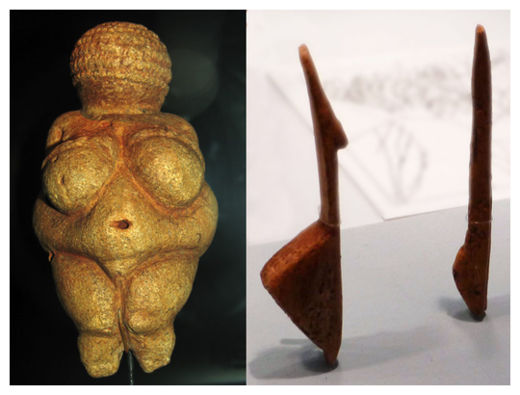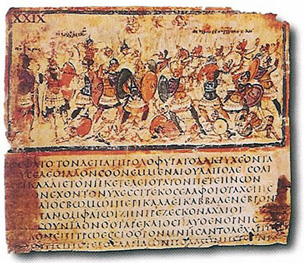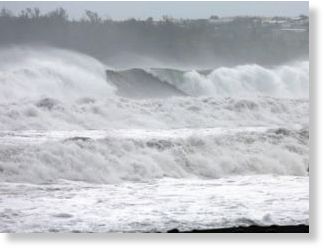
© Bildersturm/Creative CommonsChanging styles. Prehistoric female figurines started off voluptuous like the Venus of Willendorf (left) but then became schematic like these "Gönnersdorf" style statuettes (right), possibly signaling a shift in their meaning.
London
- About 35,000 years ago, prehistoric artists across Europe suddenly discovered the female form
- and the art world has never been the same. The explosion of voluptuous female figurines sculpted out of limestone, ivory, and clay directly inspired Picasso and Matisse. Researchers have debated the figurines' meaning for decades. Now, two scientists think they have the answer. Presenting their work here last week at the European Palaeolithic Conference, they claimed that the objects started off as celebrations of the female form, then later became symbols that tied together a growing human society.
The talk, part of a
special exhibition on Ice Age art at London's British Museum, surveyed the more than 20,000 year-history of female figurines, which are found at dozens of archaeological sites from Russia to France. The earliest such objects, which include the famous
Venus of Willendorf from Austria (see photo) and a statuette recently found in Germany that some have called
the "earliest pornography," date from as early as 35,000 years ago and are generally called the "Willendorf style" of prehistoric art.
It's an overtly sexual, earthy style: Many of the intricately carved figurines share features such as large, pendulous breasts, huge buttocks, and chubby legs with no feet. They display "female nakedness in all its splendor," said presenter Sabine Gaudzinski-Windheuser, who co-authored the work with archaeologist Olaf Jöris, both of the MONREPOS Archaeological Research Centre in Neuwied, Germany. Nevertheless, she pointed out, individual figurines differ in many aspects. They vary greatly in size; some are slim rather than fat; and some are hairless while others bear what appear to be elaborate headdresses, possibly reflecting clothing that prehistoric women actually wore. Moreover, during the Willendorf period, male figurines, many anatomically correct with penises and detailed facial features, also appear frequently, and occasional sculptures depict men and women side by side.



Comment: Easter Island heads have bodies!?
Archaeologists Upset Theory About Easter Island Statues